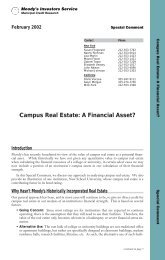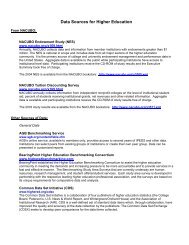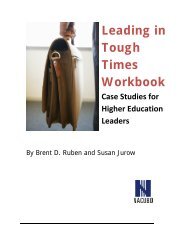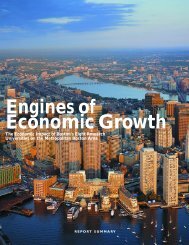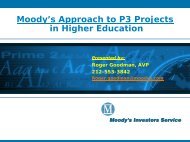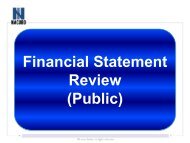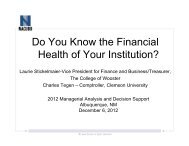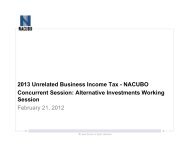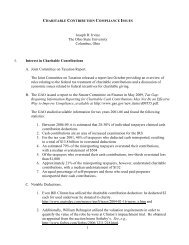March 5, 2003 The Honorable John A. Boehner U.S. ... - NACUBO
March 5, 2003 The Honorable John A. Boehner U.S. ... - NACUBO
March 5, 2003 The Honorable John A. Boehner U.S. ... - NACUBO
You also want an ePaper? Increase the reach of your titles
YUMPU automatically turns print PDFs into web optimized ePapers that Google loves.
Recommendations for the Reauthorization of the Higher Education Actto the U.S. House of Representatives Committee on Education and the Workforceregional and state economies by generating jobs, attracting and helping create new businesses,and increasing state tax revenues in addition to providing a well-educated workforce. And,academic research has driven economic progress in the U.S. over the last century.It is important that the administration share information with the public about the availabilityof higher education opportunities. And, as part of the message, to make clear that opportunitiesfor a college education are available to all regardless of an individual’s socioeconomic background.<strong>The</strong> Affordability of U.S. Higher Education. Research has consistently demonstrated thatAmericans badly overestimate the price of a college education and underestimate the amount offinancial assistance that is available to help them meet college expenses. Low-income and minoritygroups are especially likely to misjudge the price of higher education and the availabilityof financial aid. Inaccurate information leads to uniformed decisions. In the case of higher education,it leads some individuals to write-off higher education because they “know” that it isunaffordable.Price Affordability. Students from low-income families experience the greatest difficulties payingfor college and it is important that viable options be provided by increasing federal studentgrant and loans to reasonable levels that will ensure all students will have access to higher education.Many affordable options are available to students regardless of their economic status ortheir parents’ income.<strong>The</strong> College Board reports in its annual survey of colleges, Trends in College Pricing, that for thecurrent academic year (2002-<strong>2003</strong>) “about 38 percent of undergraduate students attending fouryearcolleges and universities full-time are at institutions charging less than $4,000 in tuitionand fees, and almost 70 percent face tuition charges of less than $8,000.” <strong>The</strong> table below providesinformation on the average (enrollment-weighted) tuition and fees for undergraduatestudents in 2002-<strong>2003</strong>.Tuition & Fees Room & Board Full-time enrollment(dollars) (dollars) students (% of total)Two-year public institutions $1,735 No data 1,707,552 (24%)Two-year private institutions 9,890 $5,327 20,190 (>1%)Four-year public institutions 4,081 5,582 3,721,202 (52%)Four-year private institutions 18,273 6,779 1,747,885 (24%)Note: Data are based on published prices.Source: <strong>The</strong> College Board, Trends in College Pricing, 2002It is important to point out that these data are based on annual published tuition and other educationalexpense rates and do not show the net price or actual amount students pay after studentaid is awarded. Also, the price charged for all student expenses related to paying for an undergraduateeducation does not cover the full cost the college or university incurs in delivering theeducation. Students, regardless of the type or control of the institution they attend or receipt offinancial aid, typically receive a general subsidy.National Association of College and University Business Officers 8




